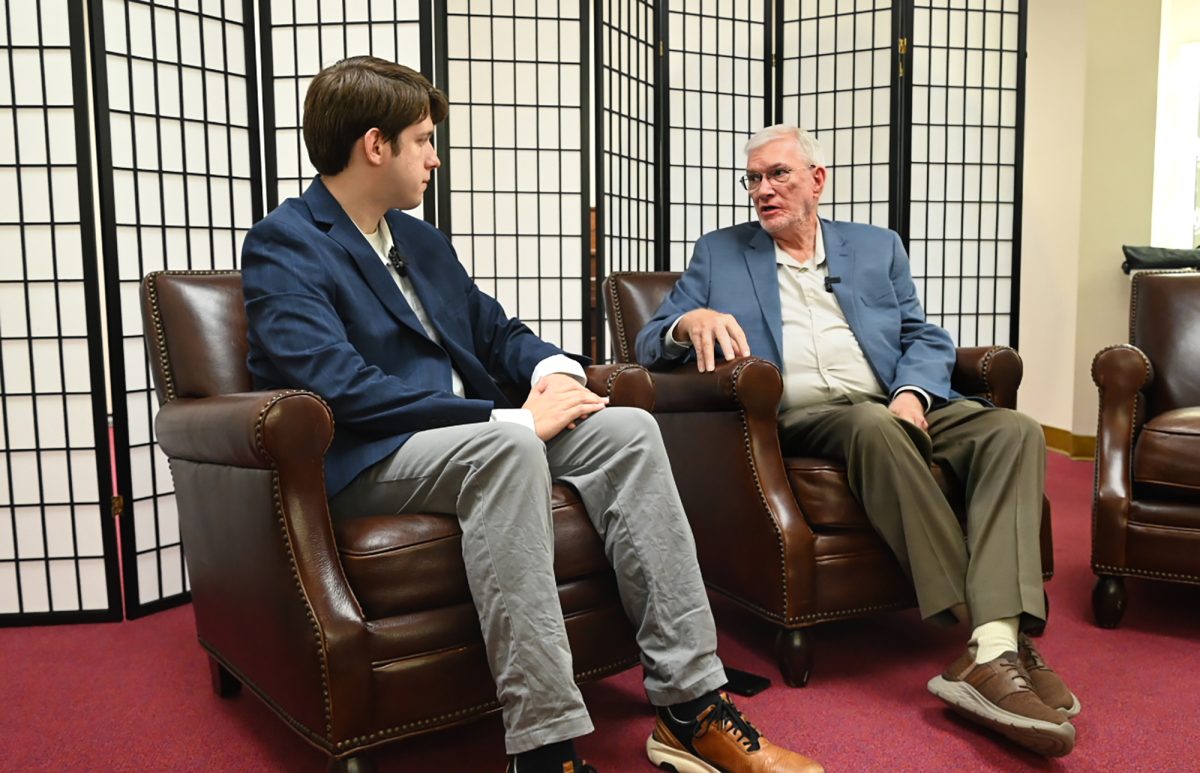BJU students have become invested in building memes about the Bob Jones University experience, a practice that powerfully builds human connection according to Dr. Gary Weier, provost and executive vice president for academic affairs and faculty member in the Division of Communication.
Each semester Weier has his media and society class spend five minutes in class making memes with their phones or computers to share with the class. He does this, he says, to illustrate how easily sophisticated communication can be created.
“All of us tend to underestimate how technology has changed the way we communicate,” Weier said.
According to Weier, the term “meme” relates back to the 1970s, when Richard Dawkins coined the phrase. Dawkins first used the term in his book The Selfish Gene to describe memes as cultural “replicators,” according to Wikipedia.
Dr. Jared Stanley, a faculty member in the division of Art + Design, said memes borrow their form from propaganda posters, in which an image and text are used together to create a strong message. Today however, he said, memes have come to be a form dedicated to expression of a common feeling or satire of an individual or idea.
“Many quippy memes rely on trite phrases that add little to our experience of life; rather, they seek to describe it,” Stanley said. “And yet, there is something enjoyable in capturing that specific experience in this visual form—a snapshot of a transient thought or feeling.”
Stanley said the remarkable power of memes to go viral comes from their ability to provide connection, as people connect with others who enjoy the same content.
Weier said this essence of connection goes beyond a shared experience to something deeper: participation. “That’s deeply human, because you connect with people in deeper kinds of ways rather than spelling it out,” Weier said.
For the BJU community, memes target shared experiences. For example, many meme pages create content with references to chapel, one of the experiences all BJU students have in common.
The owner of a meme page about BJU said, “I think people really enjoy my content because they see their own friends on a platform that is solely about Bob Jones [University].”
Weier said what makes memes inherently powerful also makes them inherently dangerous. As his class illustrates through their exercise, a powerful meme can be made in five minutes or less. This rapid pace, made possible by advancements in communication technology, gives little time for reconsidering the message before posting it.
The meme account owner said he is the filter for the account, which usually features others’ content. He said he often finds himself rejecting content that crosses the line by dehumanizing people for the sake of content.
“The key to a successful meme page is it has to be funny, it has to be appropriate, it has to be relatable and it has to be timeless,” the owner said.
“I don’t think there’s a unique set of biblical principles that apply to memes,” Weier said. “It’s just a matter of applying Scripture to that form of communication like we would apply it to all forms of communication.”
Stanley said Ephesians 4:29 is a good filter for all communication, specifically including memes: “Let no corrupt communication proceed out of your mouth, but that which is good to the use of edifying, that it may minister grace unto the hearers.”
“Simply put, before you post, stop and think about what you are really saying or supporting,” Stanley said. “It may seem harmless, when in reality, it could be hurtful to others and to your testimony.”
























































